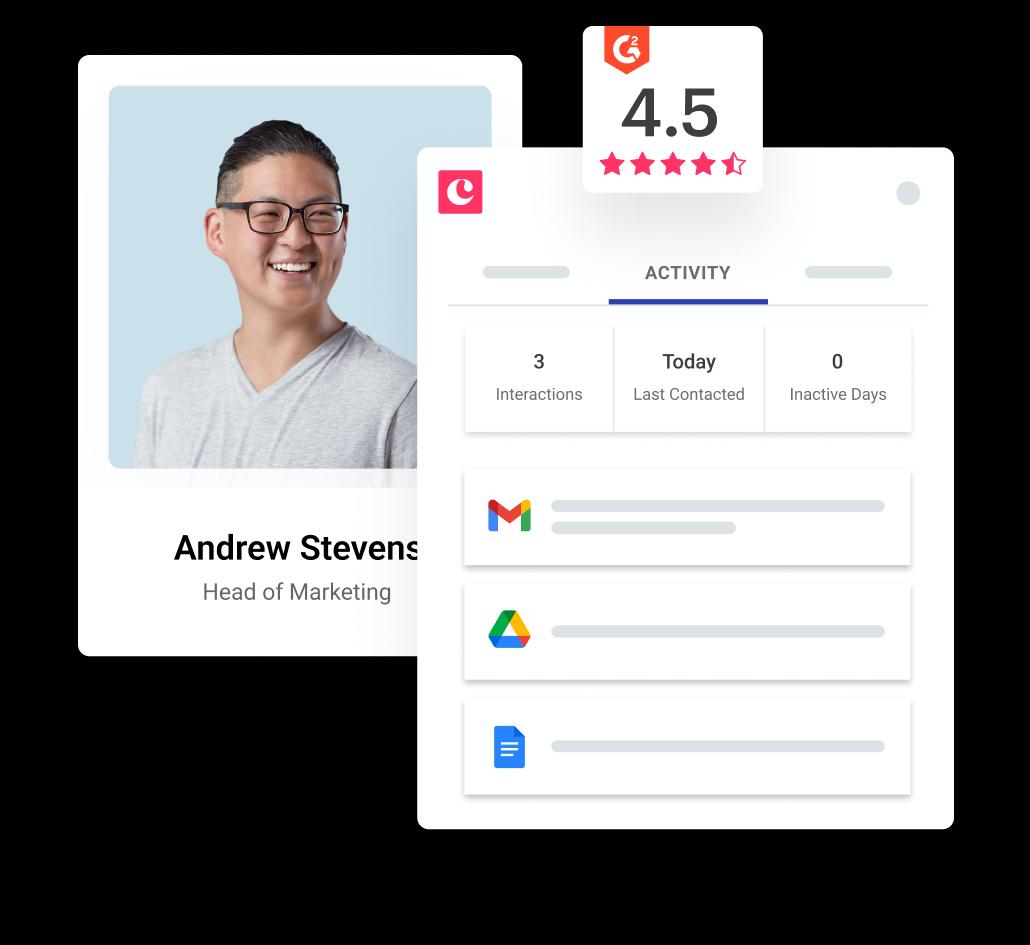
Loni Klara
If you’ve ever sold a product to a customer without ever actually meeting them, you’ve probably used an inside sales model.
Basically, inside sales is just another way of saying remote or virtual sales. It’s a departure from traditional sales where reps went out to the field to conduct business face-to-face.
According to a study by Insidesales.com, remote activity among field reps increased by 90% between 2013 and 2017. This means that inside sales has now become a huge part of the sales model—and will continue to play a larger role as technology and connectivity make it easier to conduct sales remotely.
What goes into inside sales?
Remote selling isn’t an entirely new concept. After all, telemarketers have been a part of our lives since the 1950s, selling products to customers over the phone.
However, inside sales goes beyond simply using the phone to sell remotely. The term inside sales itself came about in the 1980s to distinguish between telemarketing and the more sophisticated model that relies on software and technology to sell higher-end products, particularly in the B2B or SaaS business.
Here are some key components of an inside sales model:
- Personalized sales calls or demos (as opposed to scripted calls)
- Relationship-building through CRM, email, or other online tools
- Knowledgeable sales reps with expertise of the product
Leads are found and nurtured online through social media and email marketing, and sales calls are more personalized and unscripted. This model works well when you’re dealing with other businesses that have busy schedules and don’t necessarily have the time (or desire) to meet with a sales rep in person.
Another advantage of inside sales is that when you’re selling software, your buyer will likely want a demo of the product. Thanks to video-sharing tools, this demo can be conducted entirely online as opposed to flying a field rep out for a live demo. Not only does this save time for everyone, it also means you can reach more customers simultaneously and across different time zones.
How does inside sales compare to outside sales?
Inside sales is rapidly catching up with outside sales in terms of both growth rate and revenue. According to a 2013 Inside Sales Market Size Survey, inside sales was growing at a 300% faster rate than outside sales.
More recently, the 2017 State of Sales report by InsideSales.com found that out of 5.7 million sales professionals in the U.S.—excluding retail—52.8% were outside sales reps and 47.2% were inside sales reps. That’s nearly 50/50.
Interestingly, the report also shows that even outside sales reps spent nearly half their time (45.4%) on selling remotely, an 88.4% growth since 2014:
Inside sales reps are projected to overtake outside sales reps.
Businesses are increasingly switching entire teams of outside sales reps to inside sales reps or starting to invest in more tools like social media and CRM to train sales professionals in inside sales strategies.
In one example, the pharmaceutical company AstraZeneca replaced nearly all of its field sales support team with a 300-person inside sales staff for its Nexium brand. Because technology allows sales reps to provide support remotely rather than in the field, there’s less of a need to provide field sales support for certain sectors.
A study commissioned by the American Association of Inside Sales Professionals (AA-ISP) revealed that businesses are relying less and less on outside sales as inside sales is proving to be more cost-effective and starting to bring in more revenue:
Industries where reliance on field sales revenue decreased by 50% or more over a 2-year period.
When properly executed, inside sales can potentially reduce costs per lead by 40-90% compared to field sales. That’s huge.
However, inside sales and outside sales don’t have to be mutually exclusive. Most businesses can combine both throughout the sales process. For instance, you might find or nurture a lead remotely through social media. But depending on the size of the deal or location of the customer, a face-to-face meeting might work better for closing the deal.
Inside sales and outside sales can work together throughout the sales process.
5 tools to jumpstart your inside sales strategy:
Since inside sales focuses on conducting activities remotely, software plays a key role in helping sales reps do their business.
Customer Relationship Management (CRM) software
The role of CRM in inside sales is clearly demonstrated in LinkedIn’s State of Sales report. One of its key findings shows that sales professionals spend the most time using CRM and social selling tools—24% of CRM users spend more than 10 hours a week on the software, while 33% spend 3-5 hours.
The most-used tools by sales professionals per time spent/week
CRM software allows sales reps to manage customer relationships remotely even without face-to-face interactions. It also gives them a large amount of customer data to work from and facilitates long-term communication by:
- Pulling all contact/lead information from email clients like Gmail
- Integrating past communications via email, social media, or phone into the software
- Giving sales reps the ability to customize different customer segments
- Providing sales reporting for an overview of sales activities
Copper pulls all your leads into one place so you can organize them easily.
When you’re not finding and building relationships with customers in person, a tool like CRM software becomes even more vital for managing all your communications.
For example, if you’re finding leads online through social media or email, a CRM can gather all that information into one place so you don’t have to manage all those channels separately.
Social selling software
According to Aberdeen Group’s report on social selling, teams using social media increased metrics in multiple areas versus teams not using social media:
Areas where social selling outperforms other sales channels
More importantly, B2B buyers now use social media to make buying decisions. According to LinkedIn, that figure comes in at:
- 75% of B2B buyers
- 84% of C-level executives
The same study also showed that senior managers and those with purchasing power tend to use social media more than those who don’t.
Whether it’s LinkedIn, Twitter, Facebook, or Instagram, social media has become a big resource for finding leads online with higher conversion rates.
Inside sales teams that are investing in social media management tools or social selling software integrated with a CRM can boost sales by engaging with customers online. Here are a few ways for your sales team to use social media:
- Creating and sharing engaging content on social media
- Engaging with followers, influencers, and other businesses via DM and comments
- Researching leads to see which other accounts/content they follow
Email tracking software
Compared to other types of emails, sales emails can produce six times more money and have eight times more opens and clicks.
So for inside sales, email isn’t just a tool for communication; it’s a way to increase conversion and manage customer relationships.
Tracking emails can give sales reps a much better understanding of which email templates are working and offer them useful data like:
- Total number of emails sent
- Total number of responses
- Open rates
- Conversion rates
- Cost-per-click
You can customize tracked emails in Copper to see who opened your emails.
Many CRM tools also have built-in or integrated email tracking features so that sales teams can keep an eye on which leads have opened their emails.
Sales calling software
Telemarketing may not be as popular as it was in the ‘50s, but the phone’s influence remains high in sales. In one study, 41.2% of those surveyed said the phone is still the best way to engage with prospects.
Cold calling is still a core activity for sales reps, which means it’s useful to have software that can help log calls, record them on-the-go, or dial directly from a mobile app.
Sales reps using mobile CRM apps can call their contacts directly on their phone without copy/pasting prospects’ phone numbers to dial.
They can also easily see the last date of contact with the lead and read up on any notes of previous activities before taking the call.
Call your contact directly on your phone from the Copper mobile app.
Lead generation software
Finding and converting leads is the number one goal of most sales reps. Yet 65% of businesses say that generating enough leads is the most challenging part of their marketing strategy.
Generating leads is the biggest challenge for most companies.
When relying on online tools to generate and convert leads, lead generation tools can help close the gap by capturing every lead and seamlessly pulling all the information into a single platform. Plus, most can integrate into your CRM so your reps have all the info they need when they reach out to new leads.
Some can even produce reports that show you the source of all your leads. When you know which channel is the most effective, you can form further sales strategies based on that information.
Conversely, if you find that you’re hardly generating leads from a source compared to the amount of time you spend on it, you can think about cutting losses.
Know exactly where your leads are coming from with Copper.
To be successful at inside sales, invest in the right tools
Unlike the traditional image of the door-to-door salesman in Death of a Salesman, inside sales reps hardly ever meet prospects in person. This allows them to save time on travel, reach a wider variety and larger number of customers through software, and cut costs.
A successful inside sales strategy incorporates the right tools to reach customers remotely. Identifying the right software and taking advantage of its features contributes greatly to reaching your goals, whether through emails, calls, or ads. Once you have all your tools in the right place, your inside sales process can take off and gather full steam.










